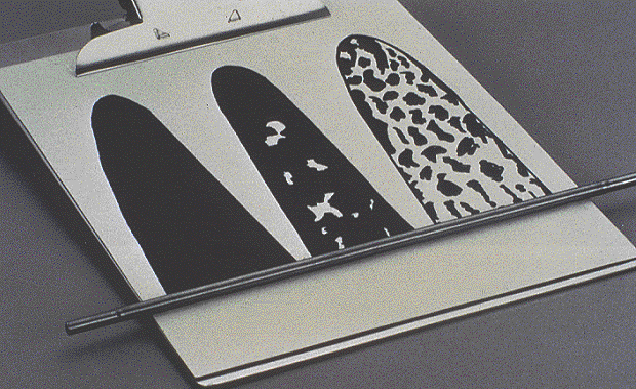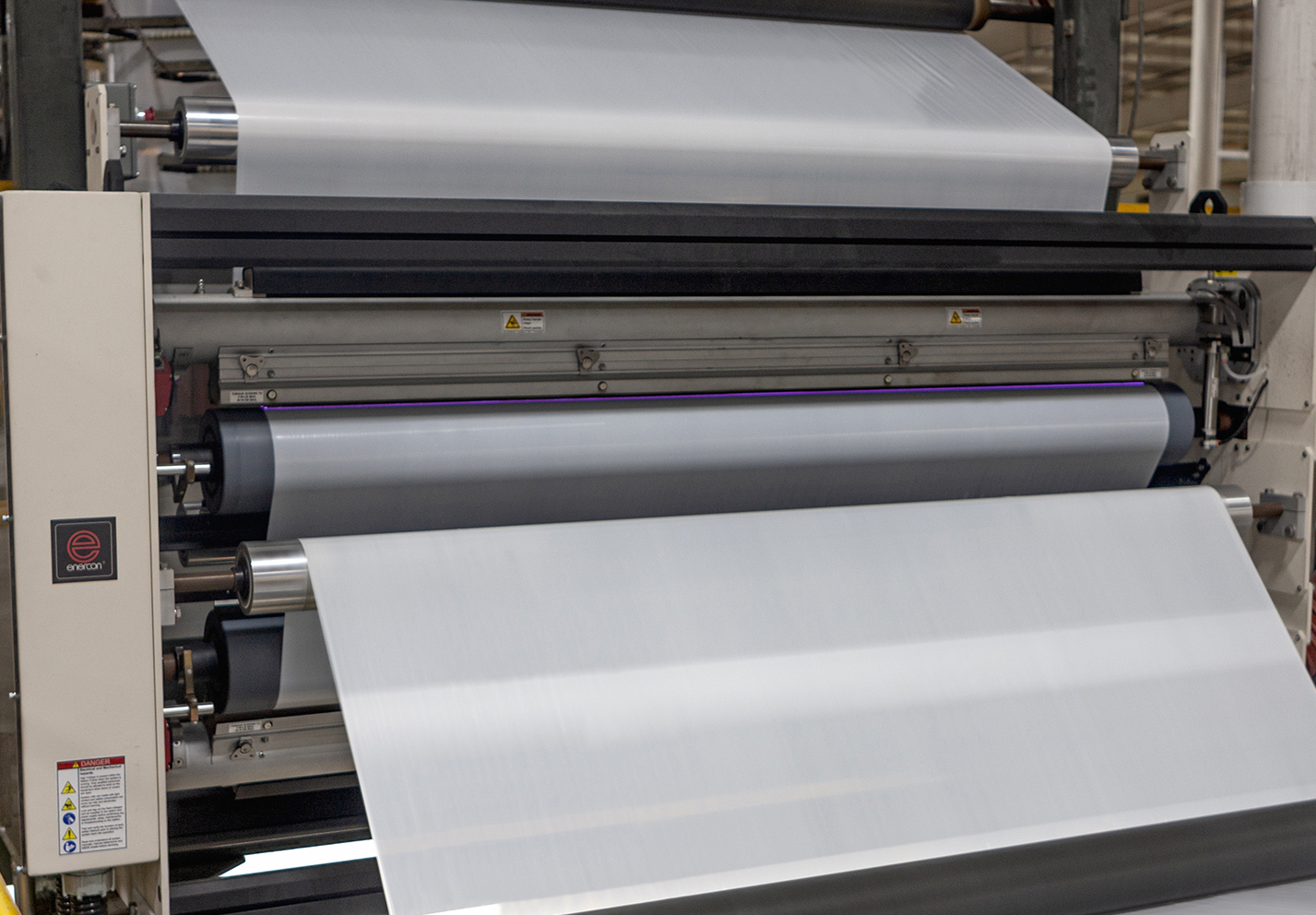Hey Buddy Can You Spare a Dyne?
- Published: January 20, 2020
Dyne tests only work when you do it right
By Tom Gilbertson, Vice President Application Engineering at Enercon
Why is a corona treater manufacturer writing about dyne testing? Because in over 34 years of working in this industry, it’s caused more confusion than any other topic.
There are two things to remember after reading this article:
- Train your operators how to properly conduct a dyne test and schedule and perform dyne test “refresher” events with operators to generate consistent and repeatable dyne level readings; and
- Meeting a dyne level target doesn’t guarantee adhesion success.
Converters and extruders who understand these points are much more successful than their competitors who do not. So let’s take a look at why dynes are a relevant topic when it comes to corona treating and adhesion.
Corona Treating Process
Generally speaking polymer films are chemically inert and non-porous which makes them unreceptive to wetting out and bonding with inks and coatings. Corona treaters are designed to ionize air in a gap between an electrode and ground roll. Films passing through this air gap are exposed to the corona which increases surface energy to enable wettability and promote adhesion of inks, coatings and adhesives. This change in surface energy is invisible to the naked eye. So, it is common practice to use dyne solutions to measure changes in surface energy.
Dyne Pens
The simplest and most common form of dyne testing is conducted with dyne pens. Dyne pens offer an easy and efficient tool to measure dyne level, but they do have drawbacks. The tips of dyne pens can become contaminated from contact with surfaces. And, as with most dyne level tests, they are highly dependent on the operator’s interpretation of the result.
It is advised that dyne pens be used more as a pass or fail test than relied upon for a very specific reading. A usage case for dyne pens is checking which side of a film has been treated prior to loading the roll for a converting operation.
Cotton Swab Method
A better way to test dyne level is the cotton swab method. Dyne solutions of various concentrations are placed on the substrate until a solution is found that wets out properly. Use an eye dropper style cap to place drops of the test solution from a calibrated dyne-level solution container to the tip of the sterile applicator swab. Use enough solution to coat the tip of the applicator, but not so much that the solution drips onto the sample. (DO NOT dip the sterile applicator swab, as this will contaminate an entire bottle of dyne fluid!)
The solution is spread lightly over approximately one square inch of the test material. If the wetting solution stays intact for two seconds, the treat level is at least as high as the dyne level of that solution.
Repeat the procedure until a solution is used that will bead up on the surface of the material being tested. The film treat level would be identified as the last solution level that remains wetted out for two seconds, on the surface. A clean cotton applicator must be used for each dyne solution to avoid contamination of the solutions that may distort the results.
This method has been a standard for years, but is also subject to inconsistencies including variables of the specific applicator swab used, the application of the fluid to the substrate, and the tester’s personal interpretation of the results. This procedure should be done in a lab environment, especially when using solvent formulations, because of the risk of spills and accidental skin contact.
Please review ASTM D2578. This test method is recognized as an industry standard. It is highly recommended that you invest in the test document ASTM D2578 – 17, Standard Test Method for Wetting Tension of Polyethylene and Polypropylene Films to properly understand how to conduct and interpret the test method.
 Mayer Rod Method
Mayer Rod Method
The Mayer rod method (TAPPI Test Method T552) is the most accurate of the dyne surface energy measurement tests for polymeric films and coated surfaces.
A substrate sample, usually measuring 8-1/2” x 11”, is clamped to a clipboard. At the top, a single drop of three different level dyne solutions, which bracket the desired treatment level, are placed horizontally from each other. A #4 or #6 wire wrapped metering rod, also known as a Mayer Rod, is then placed just above the droplets and pulled down. When a film of liquid breaks within the two second period, the tester knows that the treat level of the film is below what is written on the dyne solution bottle. This test tends to be the most accurate because the metering rod lays the solutions down at the same relative thickness as well as provide an immediate and direct comparison between the different dyne fluid values. The rod must be thoroughly cleaned with IPA after each use.
Other Test Methods
Contact angle is another measurement technique used to determine the effectiveness of surface treatment. In this case, a liquid droplet is placed on the film and the angle between the surface of the liquid and the film is measured. A smaller contact angle indicates greater wettability. In recent years, a number of portable devices have been developed to automate the process and remove operator error and subjectivity of the measurements.
Material & Process Variables
On the positive side, dyne level gives some indication that you have a chance at adhesion success; but it does not guarantee it. In fact, it is not unheard of to see different adhesion results from materials that display the same dyne levels. So how can this occur?
Some common reasons are variables in the process and equipment used to apply the ink, coating or adhesive. These all occur after the surface treatment process is completed. Operating and process variables can have a major impact on adhesion results as well as the migration of surface additives and other contamination on the material surface. This is one of the reasons it is recommended that surface treatment occurs immediately prior to your converting process.
Ultimately, good adhesion will require entanglement at a molecular level between the material surface and the coating. Entanglement is dependent upon the variables discussed above including material and coating compatibility, surface wettability, the availability of functional bonding sites, and control of process parameters. The key takeaway is that dyne level indicates the surface’s wettability which is only one of many factors that contribute to successful adhesion.
What About the Corona Treater?
When adhesion fails, many converters make the connection that the treater helps the ink or coating bond with the surface. While that is true, it can also demonstrated how many other factors affect adhesion as well.
This is not to say there is never a problem with a corona treater. The good news is that these problems are relatively easy to identify. They can range from the corona treated not being turned on, to an inability to generate any corona, to a system fault or an application or process issue. It’s recommended to always document all of your set up information for each job you run including power level, line speed and the dyne expected pre- and post-treatment dyne level results.
If you are experiencing a decrease in dynes and think there may be a problem with the treater, try the following experiment. Reduce the line speed by half and increase the power level to full. Run the film through the treater and see what dyne level result you achieve. If the dyne level improves, chances are there is something different about the film you are treating and that is causing the reason for an unexpected treatment result.
When you have defined an application and get results that are different than you expected, ask, “What’s changed?” And if you have documented your complete setup and recipe for success, chances are you’ll be able to determine the cause.






